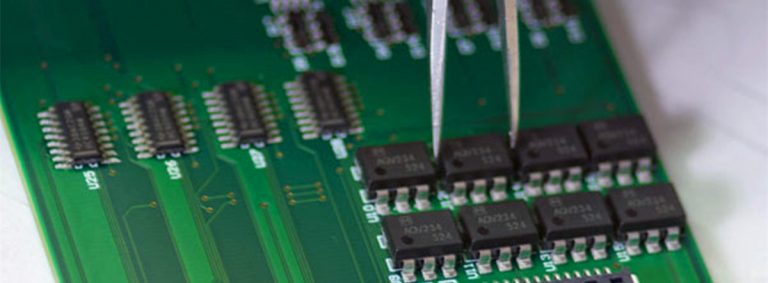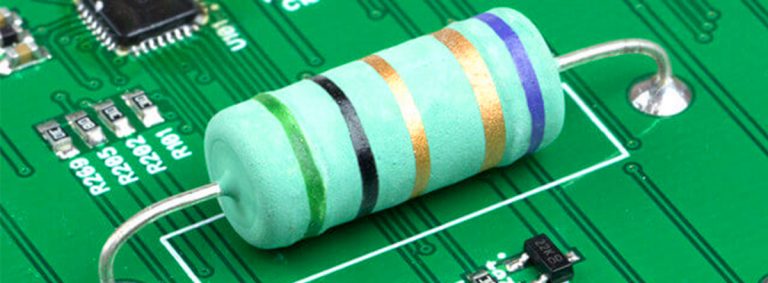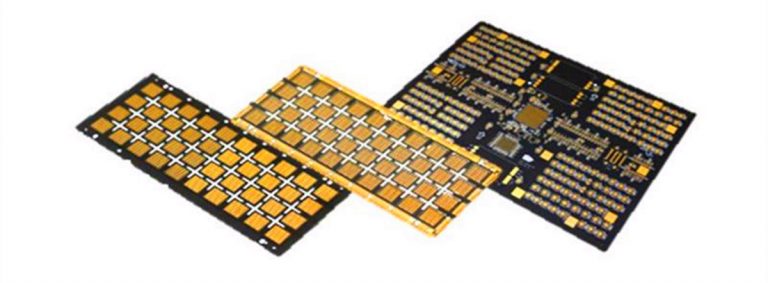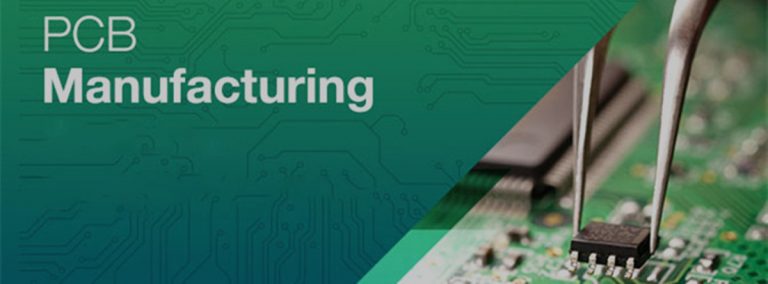What are the Main Applications of PCB Boards?
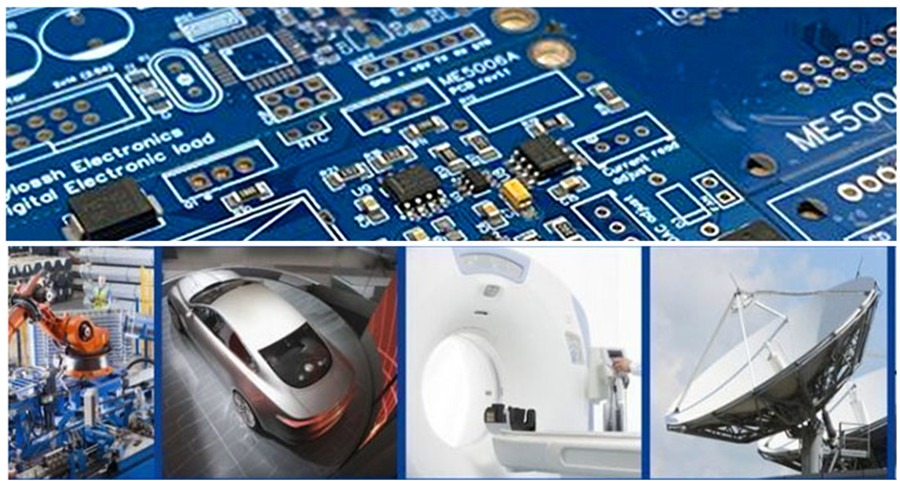
What are the Main Applications of PCB Boards?
PCB (printed circuit board) is a provider of electrical connections for electronic components and a core component of electronic equipment. Printed Circuit Boards (PCBs) have become an integral part of nearly every electronic device we use. These compact boards serve as the central nervous system of electronic gadgets, allowing for the seamless flow of electrical signals. But what are the main applications of PCB boards that make them so indispensable? In this article, we will explore the various roles PCBs play in our daily lives and industries, highlighting their versatility and significance.
1 . The application of circuit boards in medical equipment
The rapid advancement of medicine is closely related to the rapid development of the electronics industry. Many medical devices are used as basic PCBs, such as pH meters, heartbeat sensors, temperature measurements, electrocardiographs, electroencephalography machines, MRI machines, X-ray machines, CT scanners, blood pressure machines, blood glucose level measuring equipment, etc.
PCBs are used in medical imaging equipment such as Magnetic Resonance Imaging (MRI) machines and Computed Tomography (CT) scanners to process and display patient data. Life-saving devices like pacemakers and defibrillators incorporate PCBs for precise control of heart rhythms.
2. The application of Electronic PCB board in industrial equipment
PCBs are widely used in Industrial electronic manufacturing, especially those industries with high-power mechanical equipment, this equipment relies on high-power operation and high-current circuit drive. Such as arc welding, large servo motor driver, lead-acid battery charger, clothing cotton machine, etc.
Printed Circuit Boards (PCBs) are the technological linchpin that drives industrial equipment to peak performance. Their applications in control systems, data processing, communication, and safety systems are essential for achieving operational excellence, making them indispensable in modern industrial environments. PCBs are the silent architects of efficiency, ensuring that industries worldwide operate seamlessly and reliably.
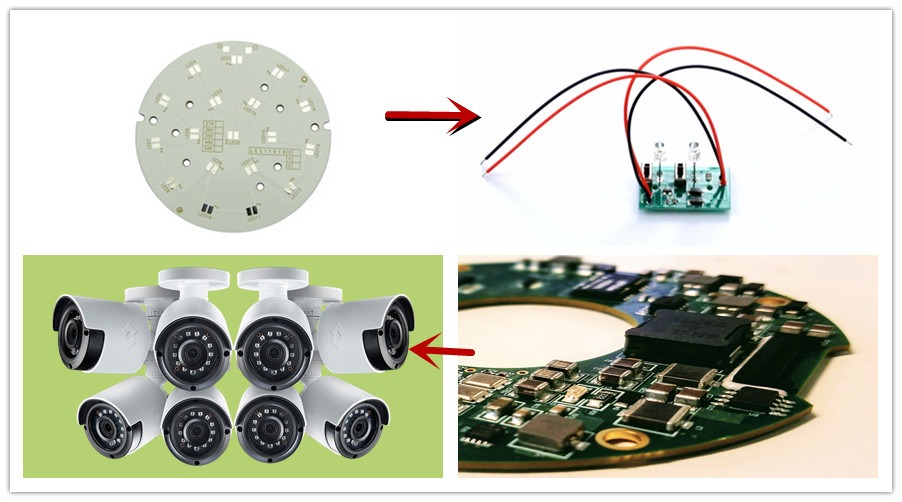
3. The PCB application of flex circuit in lighting
LED lights and high-intensity LEDs are mounted on PCBs based on aluminum substrates; aluminum has the characteristics of absorbing heat and dissipating in the air. Aluminum PCBs play a central role in LED lighting systems, controlling LED arrays, adjusting brightness, and supporting color-changing features. Smart lighting solutions utilize PCBs for connectivity, enabling users to control lighting remotely via smartphones or voice commands.
4. The PCB Application Used in Automotive and Aerospace
The flexible PCB is light in weight but can withstand high vibration. Because of its lightweight, it can reduce the total weight of the spacecraft; even in a narrow space, the flexible PCB can be adjusted. These flexible PCBs are used as connectors and interfaces and can be assembled even in tight spaces, such as behind the panel or under the dashboard.
PCBs in vehicles serve multiple purposes. Engine control units (ECUs) manage fuel injection, emissions, and performance. Safety systems, including airbags and anti-lock braking systems, use PCBs for quick and precise responses in critical situations. Infotainment systems, navigation, and advanced driver assistance systems (ADAS) depend on PCBs to provide drivers with real-time information and entertainment.
PCBs in the aerospace sector are designed to meet stringent reliability and durability standards. They are used in aircraft control systems, communication systems, and navigation equipment. In spacecraft, PCBs control propulsion systems, communication with Earth, and scientific instruments for missions like satellite imaging and deep space exploration.
5. The PCB Used in Renewable Energy Systems
Solar inverters use PCBs to convert DC power from solar panels into AC power for household and grid use. PCBs optimize power generation and monitor system performance. Wind turbine controllers rely on PCBs to manage blade pitch and generator synchronization for efficient energy production.
6. The PCB Used inTelecommunications
Telecommunication infrastructure, such as cellular base stations, routers, and switches, is heavily dependent on PCBs to manage network traffic and ensure seamless connectivity. Advanced PCB materials and PCB designs are used in high-frequency electronic applications like 5G technology to support faster data transfer rates and lower latency.
7. The Applocations of PCB Electronics
PCBs are found in a wide range of consumer electronics, from TVs and gaming consoles to digital cameras and smart home devices. They enable user-friendly interfaces, connectivity options, and power management to enhance the user experience. They provide a physical structure and electrical connections for various components, allowing devices to function efficiently. Complex electronic devices like smartphones, tablets, and laptops rely on multilayer PCBs to house microprocessors, memory modules, sensors, and connectors.
8. The Applocations of PCB in Robotics
PCBs are essential for robotic systems, governing motor movements, sensor input, and decision-making processes. In fields like manufacturing, healthcare, and exploration, PCB-driven robots automate tasks with precision and reliability.
9. The Applocations of PCB in Computer Hardware
Modern computers rely on high-density PCBs to connect and power CPUs, GPUs, RAM, and storage devices. PCB designs prioritize efficient heat dissipation and electromagnetic interference (EMI) shielding to enhance performance and reliability.
Motherboards are the heart of any computer, connecting all major components such as the CPU, RAM, GPU, and storage devices. Advanced multi-layer PCBs are essential to accommodate complex layouts, high-speed data transfer, and power delivery. High-frequency materials and controlled impedance traces are commonly used.
Graphics cards, or GPUs, are critical for rendering graphics and accelerating complex calculations in gaming, AI, and scientific applications. High-speed, high-bandwidth designs are necessary to support modern GPUs. PCBs may incorporate advanced cooling solutions like heat pipes and thermal pads.
Solid-State Drives (SSDs) and Hard Disk Drives (HDDs) rely on PCBs for data storage and retrieval. High-density interconnects (HDI) are used to maximize storage capacity. For SSDs, NVMe (Non-Volatile Memory Express) interfaces demand high-speed PCBs.
Routers, switches, and network cards rely on PCBs for data routing and communication. Multilayer PCBs with specialized signal routing for high-speed data transfer are common. RF (Radio Frequency) and antenna integration may be required.
Central Processing Units (CPUs) and microcontrollers are the brains of computers and embedded systems. Complex microprocessor PCBs require precise manufacturing to accommodate high pin counts and power distribution.
10. The Applocations of PCB in Power Electronics
PCBs are integral in power supply units (PSUs), including linear and switching power supplies. They regulate voltage and current to provide stable power to electronic devices. Motor drives and inverters use PCBs to convert and control electrical power for driving motors in applications like industrial automation and electric vehicles.
Uninterruptible Power Supplies (UPS) systems employ PCBs to switch between utility power and backup power sources seamlessly. Power Distribution Units (PDUs) use PCBs to distribute electrical power to multiple outlets or devices in data centers, industrial facilities, and commercial buildings. Power Factor Correction (PFC) circuits are integrated into PCBs to improve the efficiency of power supplies and reduce harmonic distortion.
PCBs are critical in solar inverters, converting DC power generated by solar panels into AC power for residential and commercial use. Battery Management Systems (BMS) PCBs monitor and manage the charging, discharging, and overall health of batteries in applications like electric vehicles and energy storage systems. Switched-Mode Power Supplies (SMPS) PCBs are used in various applications, including telecommunications, consumer electronics, and industrial equipment, to efficiently regulate voltage and current.
11. The Applocations of PCB in Home Appliances
PCBs are found in everyday appliances like refrigerators, washing machines, and microwave ovens. They control functions like temperature regulation, motor operation, and user interfaces. Energy-efficient features and smart functionality are increasingly integrated into home appliances through PCB technology.
12. The Applocations of PCB in Audio Equipment
PCBs are fundamental components in audio amplifiers, both in consumer and professional audio equipment. They connect and control transistors, capacitors, and resistors to amplify audio signals. Professional audio mixing consoles, used in recording studios and live sound setups, rely on PCBs for signal routing, channel controls, and equalization.
External audio interfaces for computers and recording equipment feature PCBs that convert analog audio signals into digital data and vice versa. Guitar and audio effects processors utilize PCBs to implement various sound effects, such as reverb, delay, distortion, and modulation.
PCBs in microphone preamplifiers boost the weak microphone signals to line-level signals suitable for recording or amplification. Audio equalizers use PCBs to control the frequency response of audio signals. Graphic and parametric equalizers adjust specific frequency bands to achieve desired tonal characteristics.
PCBs are part of audio interfaces and processing units within DAWs, enabling musicians and audio engineers to record, edit, and mix audio tracks. PCBs in headphone amplifiers drive headphones or earphones, delivering enhanced audio quality and volume. In multi-driver speaker systems, crossover PCBs split the audio signal into frequency bands, directing each band to the appropriate speaker driver (e.g., woofers, tweeters, mid-range).
Active or powered speakers include PCBs that integrate amplifiers, audio processing, and signal distribution. Subwoofers often have built-in PCBs for controlling subwoofer-specific functions, such as low-pass filters and phase adjustment. Wireless speakers and audio systems rely on PCBs to process and transmit audio signals via wireless communication protocols like Bluetooth or Wi-Fi.
13. The Applocations of PCB in Internet of Things (IoT) Devices
PCBs enable IoT devices to gather data from various sensors, process information, and transmit it over the internet or local networks. IoT applications include smart thermostats, environmental sensors, and asset tracking systems.
PCBs serve as the central platform for sensor nodes in IoT devices. Sensors collect data (e.g., temperature, humidity, motion, light) and transmit it to the PCB for processing. IoT devices need to transmit data to the cloud or other devices. PCBs incorporate communication modules like Wi-Fi, Bluetooth, Zigbee, or LoRa to enable wireless connectivity.
PCBs house microcontrollers or processors that manage data processing, decision-making, and communication protocols. PCBs include power management circuits to regulate voltage and manage power sources, such as batteries or energy harvesting modules. IoT devices often require memory for data storage and firmware updates. PCBs incorporate flash memory, EEPROM, or external storage interfaces.
Some IoT devices include user interfaces like touchscreens or buttons. PCBs connect these interfaces to microcontrollers for user interaction and control. In certain IoT applications, energy harvesting from sources like solar panels or vibration sensors is used to power devices. PCBs integrate energy harvesting circuits for efficient energy conversion.
PCBs in environmental monitoring IoT devices connect to sensors that measure parameters like air quality, pollution, or water quality. IoT devices that require location tracking include GPS or other positioning modules. PCBs integrate these modules and support geolocation functionality. Some IoT devices perform edge computing tasks locally on the PCB, reducing the need for constant data transmission to the cloud.
PCBs can incorporate wireless charging coils and control circuitry for IoT devices with rechargeable batteries. PCBs in ultra-low-power IoT devices may connect to sensors that consume minimal power, ensuring extended device lifespans on battery power. Some IoT devices store and analyze data locally on the PCB before transmitting aggregated data to the cloud.
14. The Applocations of PCB in Wearable Technology
PCBs in wearables, such as smartwatches and fitness trackers, facilitate data collection from sensors like heart rate monitors and accelerometers. Compact, power-efficient PCBs enable long battery life and wireless connectivity. IoT devices are susceptible to security threats. PCBs can incorporate security features such as encryption, secure boot, and tamper detection.
PCBs in smartwatches house microcontrollers, sensors (e.g., accelerometer, heart rate monitor), display drivers, and communication modules (e.g., Bluetooth). Fitness trackers use PCBs to integrate sensors for step counting, sleep tracking, and heart rate monitoring. Wearable health monitoring devices, such as ECG monitors and blood glucose meters, utilize PCBs to process and transmit vital health data.
Wireless earbuds and headphones contain PCBs that manage audio processing, Bluetooth connectivity, and touch or gesture controls. Wearable cameras, used in action sports or as body cameras, include PCBs for image sensors, storage, and video processing. PCBs in VR and AR headsets handle complex tasks, including motion tracking, display synchronization, and audio processing.
Wearable biometric devices, such as fingerprint scanners or vein authentication bands, rely on PCBs for authentication and data security. Wearable GPS and location tracking devices use PCBs to connect to satellite networks and provide real-time location data.
In conclusion, Printed Circuit Boards are the unsung heroes of our modern world. PCB applications span across various industries, from electronics to aerospace, and their importance cannot be overstated. PCBs enable the seamless functioning of countless electronic devices, making our lives more convenient and efficient
Stay Ahead with PCB Insights: Join Our Exclusive Newsletter
Get ready to unlock the future of electronics! Subscribe to our newsletter for cutting-edge PCB technology updates, industry trends, and exclusive offers. Don’t miss out on the opportunity to stay informed and gain a competitive edge. Send us your inquiries today, and let’s shape the future of electronics together!
Subscrip Now

